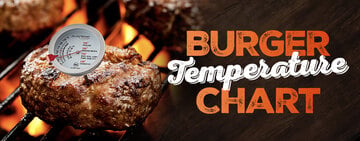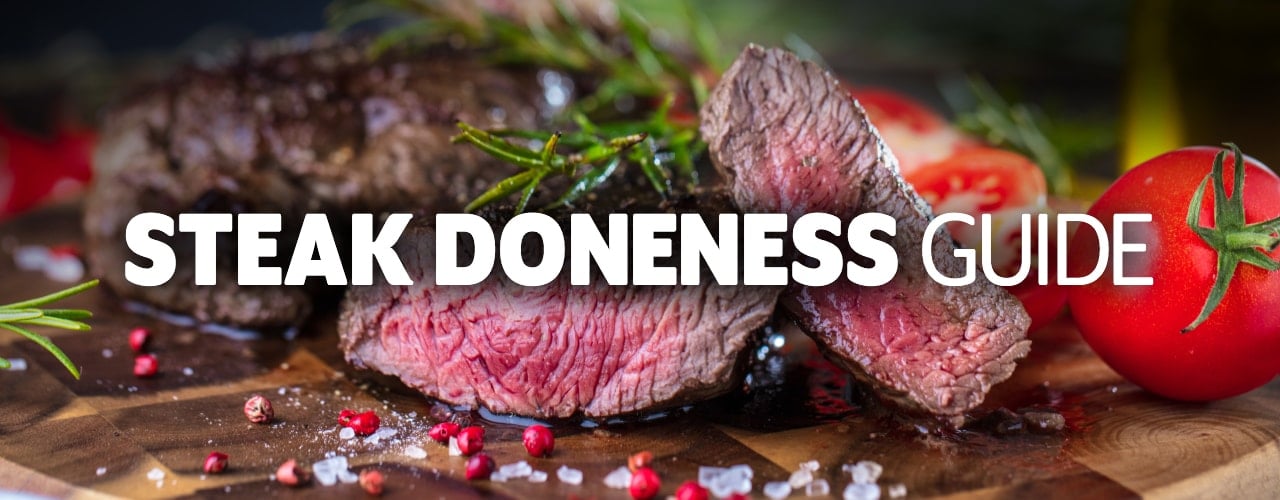
Steak Doneness Guide
Last updated on 3/21/2022Serving steak at your guests’ requested steak temperature is an essential trick of the trade. A steak that is not done well enough or is overly cooked can irk guests and result in food waste. Learn how to serve a perfect steak every time by mastering the different steak doneness levels. Follow our printable steak temperature chart to guide you in preparing steak to your guests’ liking.
Steak Temperature Guide
For precise information about every steak temperature level, see our steak doneness guide below. No matter the steak temperature, it's always essential to follow safety temperatures and best practices, like keeping food out of the temperature danger zone.

Extra Rare or "Blue" Steak
- Seared outside
- Completely red interior
- Cold and soft center
Extra Rare Steak Internal Temperature
The internal temperature of a blue steak should be 115-120 degrees Fahrenheit.
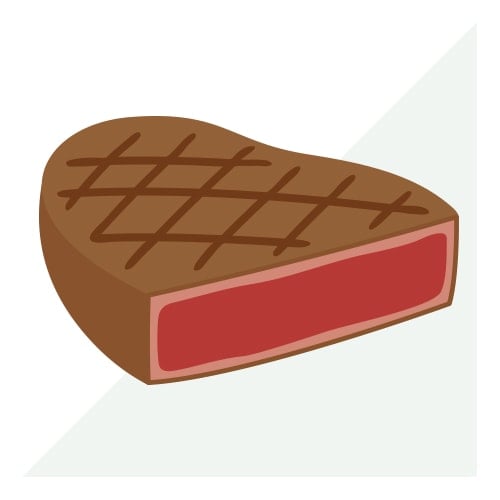
Rare Steak
- Seared outside
- 75% red interior
- Slightly cool center
Rare Steak Internal Temperature
The internal temperature of a rare steak should be 125-130 degrees Fahrenheit.

Medium-Rare Steak
- Seared outside
- 50% red interior
- Slightly firm
Medium-Rare Steak Internal Temperature
The internal temperature of a medium-rare steak should be 130-140 degrees Fahrenheit.

Medium Steak
- Seared outside
- Pink center with slight red
- Firm and springy
Medium Steak Internal Temperature
The internal temperature of a medium steak should be 140-150 degrees Fahrenheit.
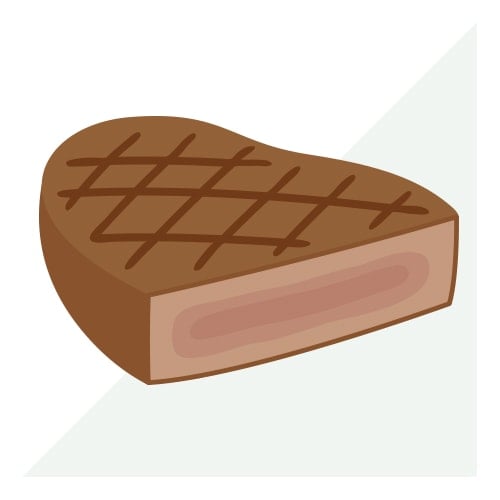
Medium-Well Steak
- Seared outside
- Slightest bit of pink in center
- Mostly cooked throughout
Medium-Well Steak Internal Temperature
The internal temperature of a medium-well steak should be 150-155 degrees Fahrenheit.

Well-Done Steak
- Seared outside
- Fully brown center
- Firm and cooked throughout
Well-Done Steak Internal Temperature
The internal temperature of a well-done steak should be 160+ degrees Fahrenheit.
In addition to the 6 classic steak temperatures, two other ways to prepare steak include tartare and the "black and blue" method. Steak tartare is a completely raw meat dish and therefore does not need to be cooked to a certain temperature. "Black and blue" steak is cooked briefly on a hot flame, so the outside is charred, while the inside is cool with an internal temperature of around 110 degrees Fahrenheit. A warning advising customers about food safe temperatures is typically added to menus next to these dishes.
Steak Temperature Chart
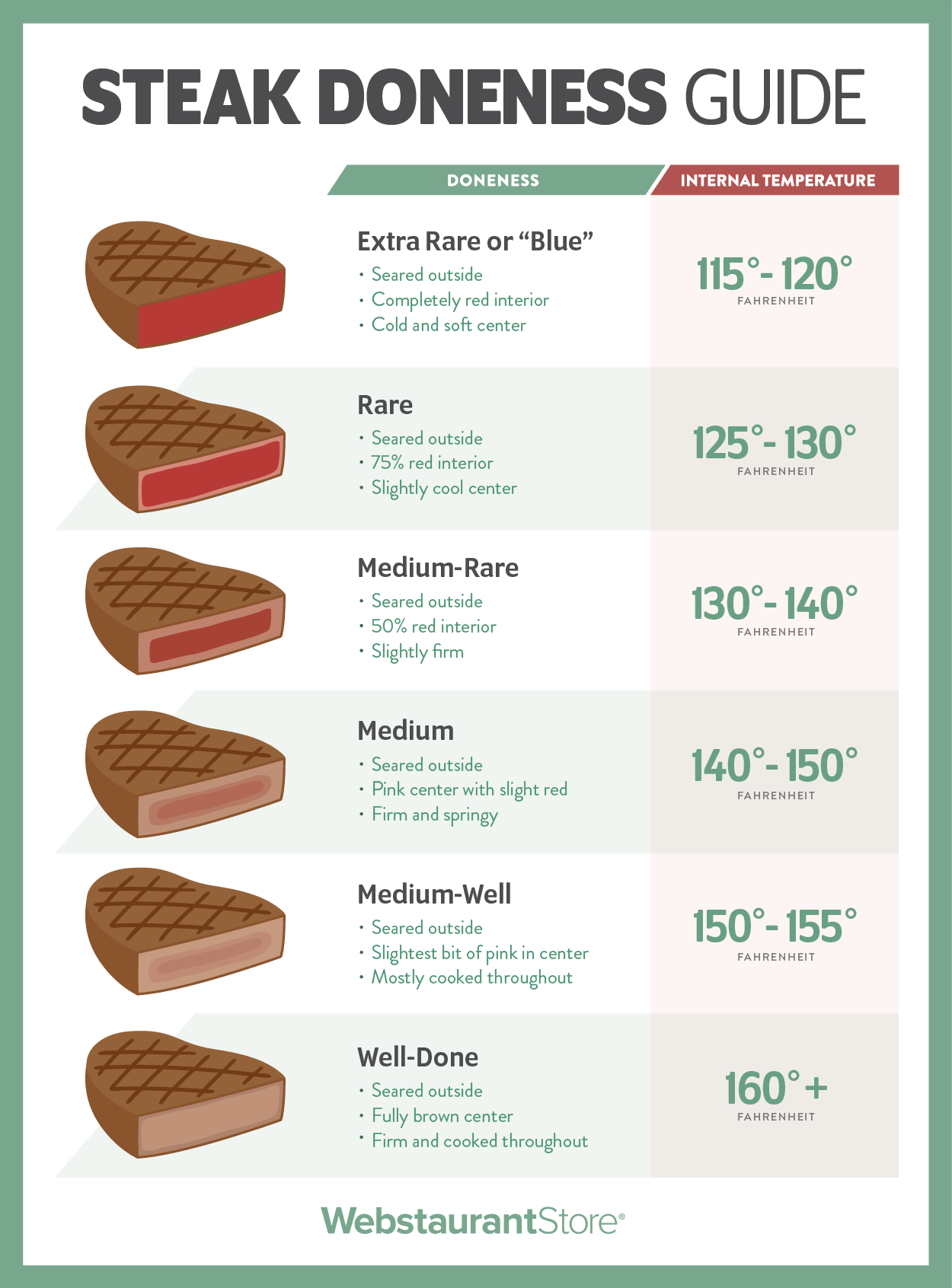 Printable Version
Printable VersionHow to Use a Meat Thermometer for Steak Doneness
Check out our video to learn how to temp a steak properly with a meat thermometer:
To use a meat thermometer, insert the probe through the side of the steak and in the thickest part of the cut, avoiding fat or bone. The thermometer should go in at least 1/2 an inch, though if the steak is thick, you may need to insert it in further.
Inserting a probe will not release the internal juices because the probe is too dull to puncture the muscle fibrils. On the other hand, overcooking steak by a few degrees can release a noticeable amount of moisture, which is why it's necessary to test meat with a dependable method.
Why to Use a Meat Thermometer to Test Steak Temperature
A meat thermometer is recommended over other less reliable methods, especially for a commercial setting. Certain methods, such as touch and finger testing, may expose the meat to bacteria from hands. Relying solely on visual cues or touch is not the most effective form of measurement due to the subjective nature of such tests.
After testing for the internal temperature of your steak, make sure to rest your steak to reabsorb and distribute juices before serving. This ensures the most moist and flavorful steak that guests will enjoy.


